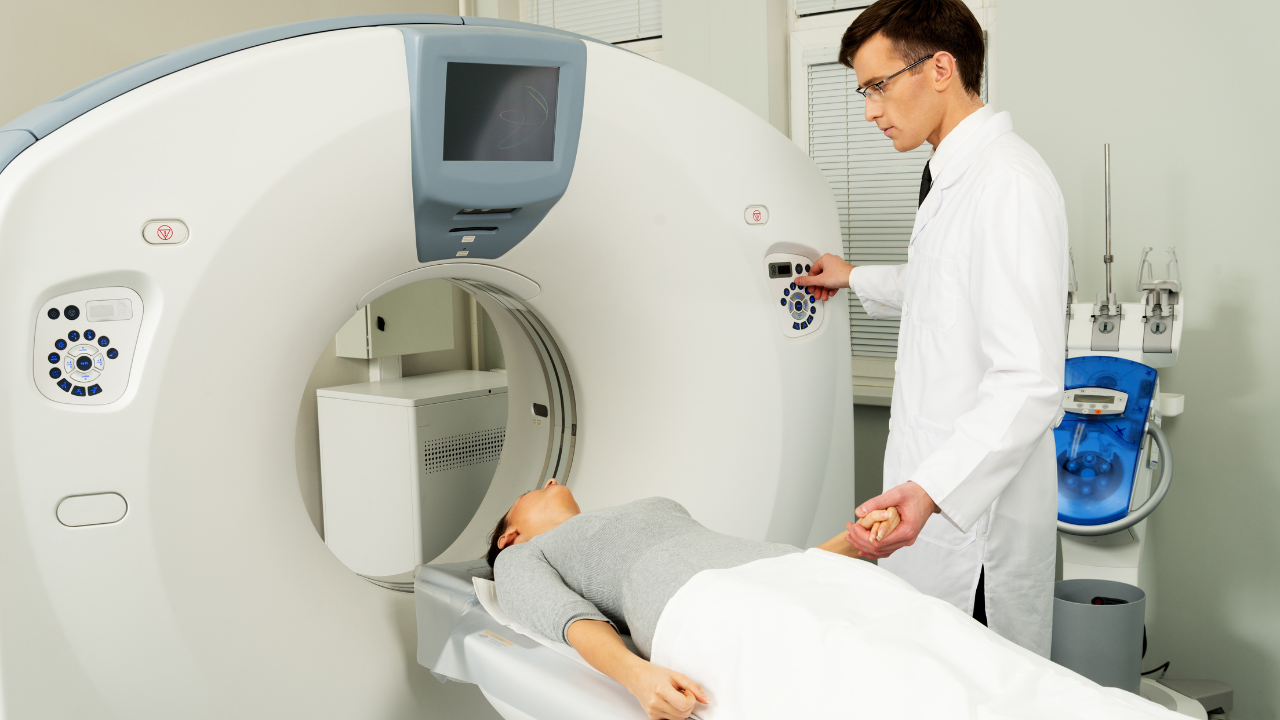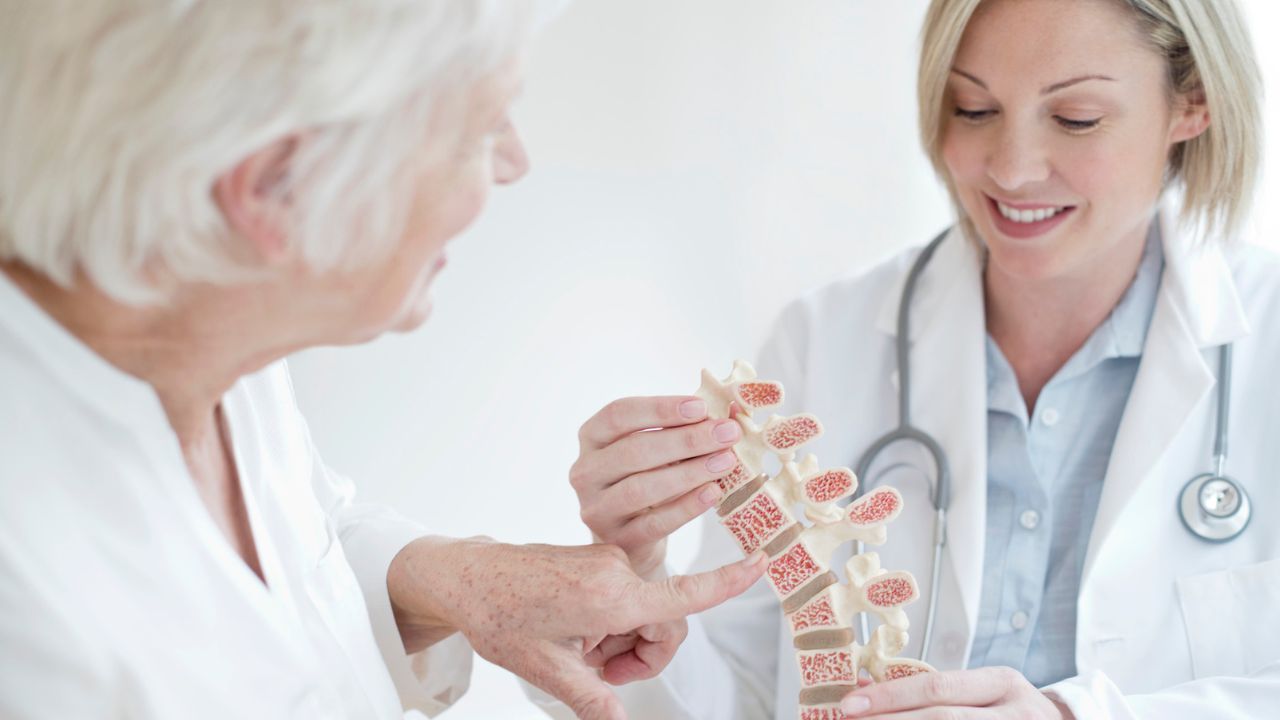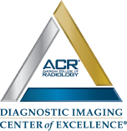Blog and News

Are Steroid Medications and Lifestyle Factors Triggering the Need for Bone Density Scans?
Yes, steroid medications
and certain lifestyle factors
can indeed trigger the need for bone density scans. If you're using glucocorticoids, these drugs increase bone resorption and impair calcium absorption, crucial elements in maintaining bone strength. Similarly, lifestyle choices such as smoking or excessive alcohol consumption negatively affect bone density by altering calcium balance and damaging bone formation mechanisms. These conditions necessitate monitoring through DXA scans, which assess your bone's mineral content and help pinpoint risks like osteopenia or osteoporosis. Understanding these influences on your bone health might steer you towards essential preventative measures. Discovering more could greatly benefit your overall bone management strategy.
Key Takeaways
- Steroid medications increase bone resorption, necessitating bone density scans to monitor potential weakening.
- Long-term steroid use decreases calcium absorption and hormone production, impacting bone health.
- Lifestyle factors like smoking and excessive alcohol consumption negatively affect bone density, underscoring the need for scans.
- Low body weight and decreased estrogen levels in postmenopausal women heighten osteoporosis risk, prompting periodic bone assessments.
- Regular bone density scans allow early detection and management of bone health issues related to steroids and lifestyle choices.
Understanding Bone Density Scans
Bone density scans, technically known as dual-energy X-ray absorptiometry (DXA or DEXA), quantitatively measure the mineral content of your bones to assess strength and fracture risk. These scans are pivotal in diagnosing osteoporosis and other conditions that lead to bone fragility. As you're likely invested in promoting health and well-being, understanding the mechanics and implications of DXA scans can enhance your ability to support those at risk. DXA scans utilize low-dose X-rays with two distinct energy levels aimed at the bones. The absorption of these X-rays varies depending on bone density; denser bones absorb more X-rays, which is quantified to produce a T-score. This score compares your bone density to a healthy, young adult norm, with deviations indicating potential vulnerabilities. A T-score of -1.0 or above is considered normal, while scores between -1.0 and -2.5 suggest osteopenia, a precursor to osteoporosis. Scores below -2.5 indicate osteoporosis, signaling significant concern. These metrics empower you with the knowledge to guide individuals in preventive or responsive health strategies effectively. For those devoted to caregiving, grasping the nuances of DXA results is crucial. It allows you to tailor discussions on nutrition, physical activity, and lifestyle modifications that can fortify bone health, thereby preemptively addressing conditions that compromise skeletal integrity.Role of Steroid Medications
Understanding DXA results also necessitates exploring how steroid medications can impact bone density, as these drugs play a significant role in modifying bone mineral content. Steroids, particularly glucocorticoids used in treating autoimmune and inflammatory conditions, can lead to significant bone demineralization when used long-term. Here's how:- Catabolic Effects on Bone Matrix: Glucocorticoids increase bone resorption by enhancing osteoclast activity and lifespan, while simultaneously decreasing osteoblast proliferation and function. This imbalance favors bone matrix degradation over formation, leading to decreased bone mass and increased fracture risk.
- Inhibition of Calcium Absorption: These medications can reduce intestinal calcium absorption and alter renal calcium handling, which decreases the availability of calcium for bone mineralization. This process is crucial since adequate calcium levels are essential for maintaining strong bone architecture.
- Suppression of Gonadal Hormone Production: Long-term steroid use can suppress the synthesis of sex hormones, which are vital for bone health. Lower levels of estrogen and testosterone are associated with reduced bone density and strength, further exacerbating the risk of osteoporosis.
Impact of Low Body Weight
Low body weight significantly increases your risk of osteoporosis by reducing the mechanical load on bones, which is essential for maintaining bone density and strength. The biomechanical theory of bone adaptation posits that skeletal mass and architecture are largely determined by mechanical forces acting on the skeleton. When you have low body weight, there's less gravitational force exerted on your bones, resulting in lower bone formation rates and increased resorption, leading to a decrease in bone mass. Epidemiological studies corroborate that individuals with a body mass index (BMI) under 19 kg/m² are at a heightened risk for osteoporosis and related fractures. This risk is particularly pronounced in postmenopausal women, where adipose tissue plays a critical role in estrogen production, a hormone pivotal for bone mineralization and resorption regulation. To mitigate these risks, it's crucial to maintain a healthy weight. Nutritional intake should be optimized to include adequate amounts of calcium and vitamin D, which are vital for bone health. Physical activities, especially those that are weight-bearing like walking or jogging, can stimulate bone formation through the piezoelectric effect generated by mechanical stress on the bone. Understanding these mechanisms and adjusting lifestyle choices accordingly can profoundly impact bone health, serving not only oneself but the broader community by reducing the prevalence of osteoporosis-related health issues.Effects of Previous Fractures
If you've experienced a fracture, it's crucial to understand how this impacts your skeletal integrity. Research shows that a history of fractures can significantly increase your risk of subsequent breaks, particularly if your bone mineral density is already compromised. Effective management and monitoring of bone health are essential to mitigate these risks and enhance fracture healing.Fracture History Impact
Previous fractures significantly elevate your risk of subsequent breaks, primarily due to compromised bone structural integrity and altered biomechanics. Understanding the impact of a fracture history is critical when considering the necessity for bone density scans. Here are key factors to consider:- Bone Remodeling Disruption: Fractures disrupt the normal bone remodeling process, leading to areas of weakness that can predispose you to further injury.
- Microarchitectural Damage: Even after healing, microarchitectural changes within the bone persist, affecting its ability to withstand normal stresses and strains.
- Proprioceptive Deficits: Post-fracture, there can be a decrease in proprioceptive ability, which is your body's capability to perceive movements and position, further increasing fall risk.
Risk of Repeat Fractures
Individuals with a history of fractures face a significantly increased risk of experiencing subsequent breaks due to compromised bone integrity and altered biomechanical functions. When you've suffered a fracture, microarchitectural deterioration of bone tissue becomes more pronounced, leading to a heightened vulnerability. This condition, known as skeletal fragility, escalates the probability of recurrent fractures. Epidemiological studies indicate that a prior fracture doubles the risk of a future fracture, independent of bone mineral density (BMD) measurements. This phenomenon, referred to as the ' fracture cascade,' is critical in clinical assessments for osteoporosis management. Understanding these risks is essential for healthcare providers dedicated to preventing further harm and enhancing patient outcomes through targeted therapeutic interventions and proactive surveillance.Healing and Bone Strength
After a fracture, your bone regeneration process initiates changes that can either restore or further compromise skeletal strength, depending on several biomechanical and biological factors. To optimize healing and enhance bone strength, consider these crucial elements:- Adequate Calcium and Vitamin D Intake: Essential for osteoblast function, these nutrients facilitate the deposition of new bone matrix.
- Mechanical Stress: Controlled physical activity promotes osteogenesis through mechanotransduction pathways, which stimulate bone formation and remodeling.
- Monitoring Hormonal Levels: Particularly, maintaining optimal levels of estrogen and testosterone, which are critical in modulating bone density and turnover.
Calcium Deficiency Concerns
Calcium deficiency significantly compromises bone mineral density, increasing your risk for osteoporosis and fractures. Essential for skeletal integrity, calcium plays a pivotal role in maintaining the structural framework of your bones. When you're deficient in calcium, your body must extract it from your bone reservoir, weakening your skeletal structure over time. The daily recommended intake of calcium varies: adults aged 19-50 need approximately 1000 mg, which increases to 1200 mg for those over 50. Factors such as dietary habits, absorption efficiency, and certain genetic predispositions can influence your calcium levels. Chronic inadequate intake leads to decreased bone mass, termed osteopenia, and can progress to osteoporosis. To assess your calcium levels and bone health, consider a dual-energy X-ray absorptiometry (DEXA) scan, which quantifies bone mineral density. This measurement helps identify areas of potential weakness and the extent of mineral loss. It's crucial to integrate calcium-rich foods into your diet—dairy products, leafy greens, and fortified foods—or consider supplements if dietary sources are insufficient.Smoking and Bone Health
You may not realize it, but smoking significantly undermines your bone health by decreasing bone mineral density and impairing fracture healing. When you inhale cigarette smoke, you're not just affecting your lungs but also your bones. The harmful effects of smoking on skeletal health are mediated through several biochemical pathways and cellular mechanisms that deteriorate bone quality and increase your risk of osteoporosis and fractures. Here are three critical impacts of smoking on bone health:- Reduction in Calcium Absorption: Nicotine and other toxins in cigarettes interfere with the body's ability to absorb calcium. This essential mineral is crucial for bone formation and maintenance. Lower calcium levels lead to decreased bone density, making bones fragile and more prone to breakage.
- Impairment of Osteoblast Function: Smoking affects osteoblasts, the cells responsible for bone formation. Toxins from cigarette smoke inhibit these cells' ability to proliferate and function effectively, slowing down the bone rebuilding process and contributing to weaker skeletal structures.
- Alteration of Hormonal Balance: Smoking can alter levels of hormones critical for bone health, including estrogen. This disruption is particularly detrimental in women, leading to increased bone loss rates, especially post-menopause when bone density naturally declines.
Alcohol Intake and Osteoporosis
Excessive alcohol consumption frequently exacerbates osteoporosis risk by impairing bone density and disrupting the balance of calcium in the body. As you may already know, the skeletal system relies on calcium to maintain its strength and structural integrity. When you drink heavily, your body's ability to absorb calcium from your diet diminishes significantly. This reduction is partly due to alcohol's interference with the functioning of vitamin D, which is crucial for calcium absorption. Furthermore, studies have shown that chronic alcohol intake can lead to bone marrow suppression. This suppression adversely affects osteoblasts, the cells responsible for forming new bone. The decreased activity of these cells results in a lower bone formation rate and, consequently, a reduced bone mass density (BMD). The direct toxicity of alcohol on osteoblasts also accelerates bone degradation, further compromising bone health. To mitigate these risks, it's vital to manage your alcohol intake diligently. Consider seeking advice from healthcare professionals who can provide support and resources tailored to reducing alcohol consumption. By taking proactive steps, you can help preserve your bone density and overall health, ultimately serving both yourself and your community by maintaining your ability to contribute actively and positively.Estrogen Levels in Postmenopausal Women
As you enter menopause, your body's estrogen production significantly decreases, impacting your bone mineral density and increasing your risk of osteoporosis. Hormone Replacement Therapy (HRT) can mitigate these effects by supplementing estrogen levels, thereby enhancing bone density and reducing fracture risks. However, it's crucial to consider the potential risks and benefits of HRT, as its suitability varies depending on individual health profiles and genetic predispositions.Estrogen Decline Effects
Estrogen levels in postmenopausal women typically plummet, significantly impacting bone density and increasing the risk of osteoporosis. This hormonal reduction alters the balance between bone resorption and formation, leading to accelerated bone loss.- Increased Bone Resorption: Osteoclast activity intensifies as estrogen decreases, leading to greater bone matrix degradation.
- Reduced Bone Formation: Osteoblasts, the cells responsible for bone formation, diminish in activity without adequate estrogen, slowing the bone rebuilding process.
- Altered Calcium Metabolism: Estrogen deficiency impacts calcium absorption in the intestines and its reabsorption in the kidneys, contributing to lower overall calcium availability for bone mineralization.
Hormone Replacement Therapy
Given the significant impact of estrogen decline on bone health, hormone replacement therapy offers a targeted intervention to mitigate these effects in postmenopausal women. This therapy, typically involving the administration of systemic estrogen, can significantly reduce the accelerated bone resorption associated with estrogen deficiency. By augmenting estrogen levels, you're effectively decreasing the bone turnover rate, which is crucial for maintaining bone density and reducing fracture risk. Clinical trials have demonstrated that hormone replacement therapy can lead to a 35% reduction in vertebral fractures and a 50% decrease in nonvertebral fractures. It's essential, however, to tailor the therapy to individual risk profiles, considering factors like age, time since menopause, and specific bone mineral density readings to optimize therapeutic outcomes and minimize potential risks.Frequently Asked Questions
How Quickly Can Steroids Affect Bone Density?
Steroids can impact your bone density within months, accelerating bone loss and increasing fracture risk. Regular monitoring and preventive strategies are crucial to mitigate these effects and maintain your skeletal health.Can Bone Density Improve Naturally Over Time?
Yes, your bone density can improve naturally over time with proper nutrition, particularly calcium and vitamin D, regular weight-bearing exercise, and avoiding smoking and excessive alcohol. It's vital to maintain these healthy habits consistently.Are Bone Density Scans Safe for Children?
Isn't your child's safety paramount? Bone density scans for children are generally safe, employing minimal radiation—often less than daily exposure. They're crucial for diagnosing osteopenia or osteoporosis, ensuring timely and effective intervention.How Often Should One Undergo a Bone Density Scan?
You should undergo a bone density scan every two years, especially if you're at risk for osteoporosis. Frequent monitoring helps detect changes early, allowing for timely intervention to prevent significant bone loss.Do Vitamin D Levels Affect Bone Density Results?
Yes, your vitamin D levels significantly impact bone density results; insufficient levels can lead to lower bone density, increasing fracture risks. Maintaining optimal levels is crucial for bone health and preventive care.Statistics
- Patients with rheumatoid arthritis are recommended to have periodic bone density scanning due to an increased risk of osteoporosis associated with the disease.
- Lifestyle factors such as smoking and high alcohol intake are linked to lower bone density, and patients with these risk factors may require more frequent scans.
- Pediatric bone density scanning is gaining attention, as studies show that bone mass acquired during childhood affects bone health in later life.
- Average radiation exposure during a bone density scan is about 1-10 microsieverts, which is considered very low compared to other radiologic procedures.
- Bone density scans not only help diagnose osteoporosis but are also crucial in the assessment of metabolic bone diseases such as Paget's disease.
- Research shows that the risk of a hip fracture doubles with every standard deviation decrease in bone mineral density as measured by DEXA scanning.
- Bone density scans are reported using T-scores, where a T-score of -1 and above is considered normal, and a score below -2.5 indicates osteoporosis.
- Asian and Caucasian women have been found to have higher rates of osteoporosis, which affects the demographic targeting of bone density scanning initiatives.
External Links
- A JAMA article investigates the use and misuse of bone density monitoring in a large population.
- The Cleveland Clinic provides details about the bone density scan procedure and its significance.
- The British Medical Journal published research on bone health and the risk of fracture.
- The American Academy of Orthopaedic Surgeons talks about osteoporosis and bone health.
- The National Osteoporosis Foundation provides an overview of bone density testing.
- MedlinePlus provides information about bone density for the general public.
- EndocrineWeb discusses how osteoporosis is diagnosed with a particular focus on bone mineral density (BMD) testing.
- The International Osteoporosis Foundation provides resources on bone mineral density (BMD) and diagnosis.
How To Use Calcium Supplements for Bone Density
Using calcium supplements can help you maintain or increase bone density, especially if you're not getting enough calcium from your diet. The recommended calcium intake varies by age, sex, and life stage, so consult with your healthcare provider to understand your specific needs. Always take calcium supplements as directed and be aware that excessive calcium can have adverse effects. To maximize absorption, do not take more than 500-600 mg at a time and pair your calcium intake with vitamin D to enhance its effectiveness.Recent Posts
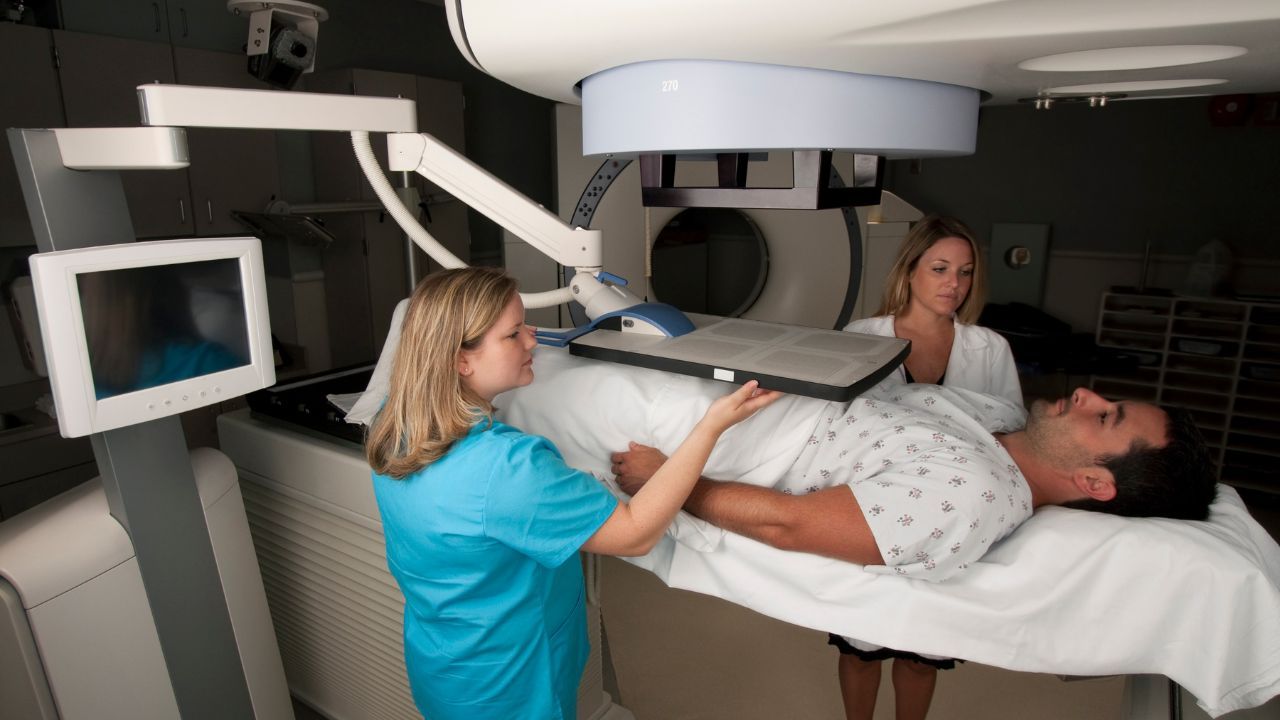
11 Apr, 2024
3D MRI Prostate mapping is a new procedure which offers a number of improvements compared to the traditional TRUS (transrectal ultrasound) biopsy for people who have prostate cancer. TRUS guided biopsies have been the go-to way of diagnosing prostate malignancy for the last 20 years, but this procedure is quite invasive, and it is not very precise.
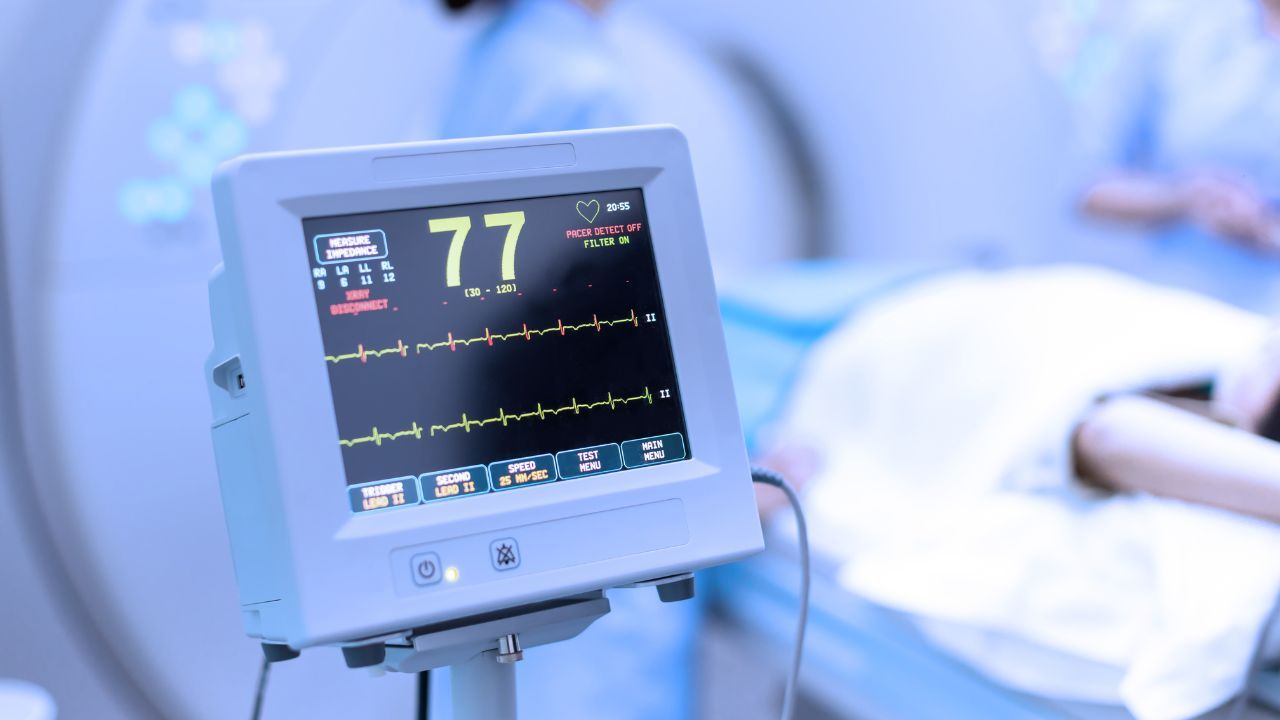
03 Apr, 2024
A lot of people are at risk of heart disease and do not even know it. The good news is that there are simple procedures which can help to identify people who are at risk of heart disease so that they can take precautions to reduce their risk, and get the medical care that they most need.

28 Mar, 2024
Here is a comprehensive guide to help you understand how your Calcium Score could be an important indicator of your risks of suffering from a heart attack. Your Calcium Score can be found after performing a CT scan of your heart. This score is calculated by measuring the quantity of calcium that is present in the arteries that take blood to your heart, also known as the coronary arteries.
Services
Contact Details
Address: 1971 Gowdey Road,
Naperville, IL 60563
Phone: 630-416-1300
Fax:
630-416-1511
Email: info@foxvalleyimaging.com
© Copyright 2023 Fox Valley Imaging, Inc..

